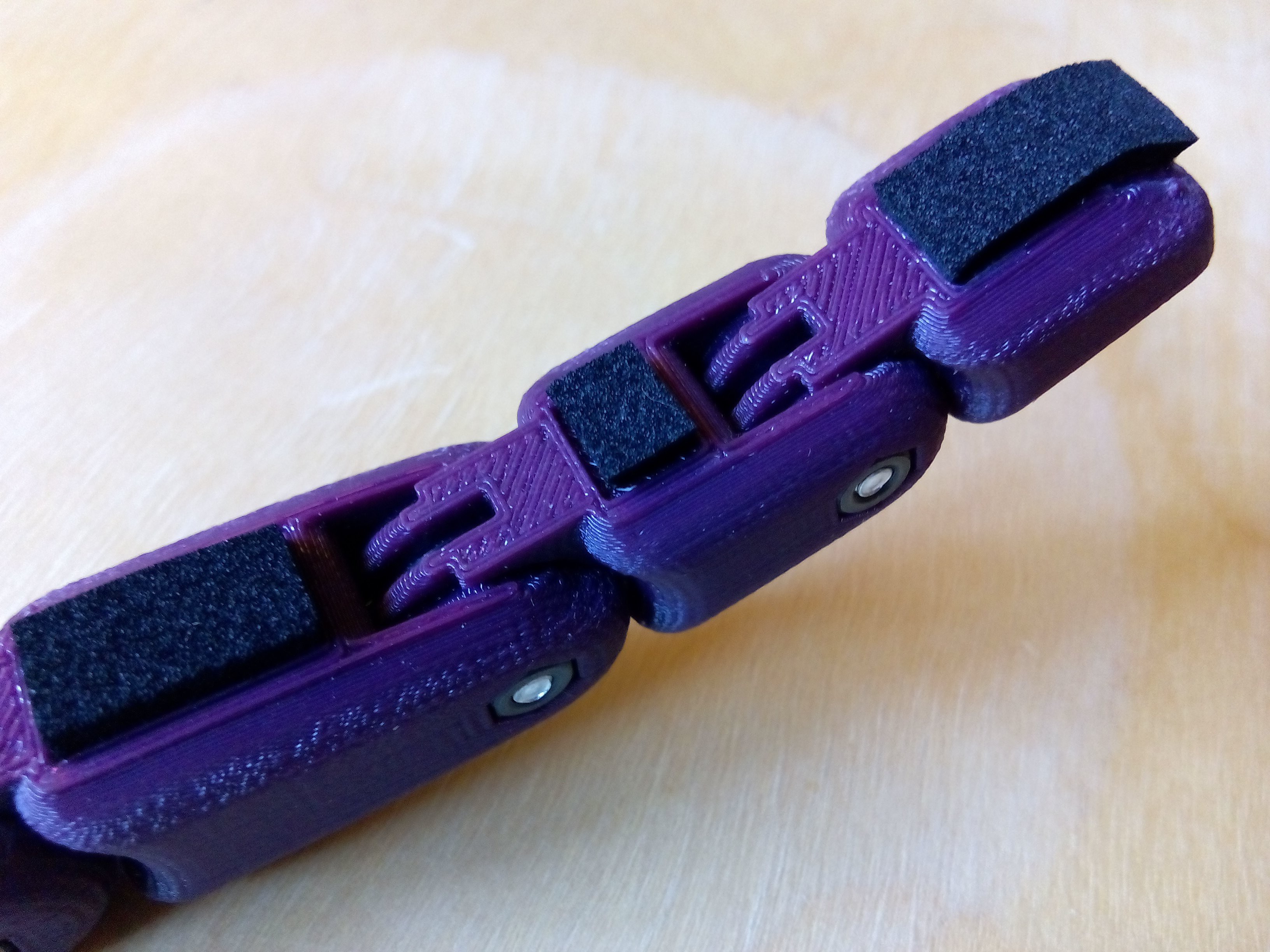One of the things that have been on the drawing board for some time is the improvement of the stability of the grips. PLA, which is the material of which Dextra is made, does not have very good anti-slip properties. For this reason, when handling small or thin objects the grip was not very stable and they always fell, and so did moderately heavy objects, such as a filled bottle, held upright.
When I designed the current version of Dextra, I took into account this problem, so I included a small rectangular cavity on the underside of each phalanx. My idea was to fill these cavities with some material with a high friction coefficient and that was cheap and easy to get. However, after finishing the mechanical design, I started working on the software and other aspects of the project and I put aside the issue of grasp stability.
This week I decided to tackle this problem, to be able to reproduce the Cutkosky grasp taxonomy (which is the most used benchmark for robotic hands) for the video of the Hackaday Prize finals. First, I tried with bathroom silicone sealant, but it was more slippery than I thought. I also thought of using laptop rubber feet, cut to fit inside the cavities of the phalanges, but they are usually quite bulging. Some years ago I used hot-melt adhesive for a similar purpose, so yesterday I went to the nearest hardware store to buy a hot glue gun and some glue sticks. I love hardware stores, so I took a walk to see what products they had. Then, on a shelf, I found a much better solution: a 9x10 cm rectangle of self-adhesive anti-slip foam. It is simply perfect. It is not only cheap (about $1,5 the unit) and easy to get, but also it is much better than hot-melt adhesive or laptop rubber feet because it is much softer. This means that when grasping an object, the pads will adapt to its surface, which will allow to perform much firmer grips, and even (a must try) hold delicate objects like an egg. In addition to that, being self-adhesive, its integration is a piece of cake.
Today I have cut the pads with the dimensions of each of the cavities and installed them on the fingers. The result can be seen in the image below. I have spent the rest of the morning reproducing almost all of the grasps from the Cutkosky grasp taxonomy, and I am really happy with how the new anti-slip "fingerprints" work. Tomorrow I will post a new log showing the results of the grasping experiments, because I am frankly surprised by the dexterity of the hand, even though I am its designer!

 Alvaro Villoslada
Alvaro Villoslada
Discussions
Become a Hackaday.io Member
Create an account to leave a comment. Already have an account? Log In.